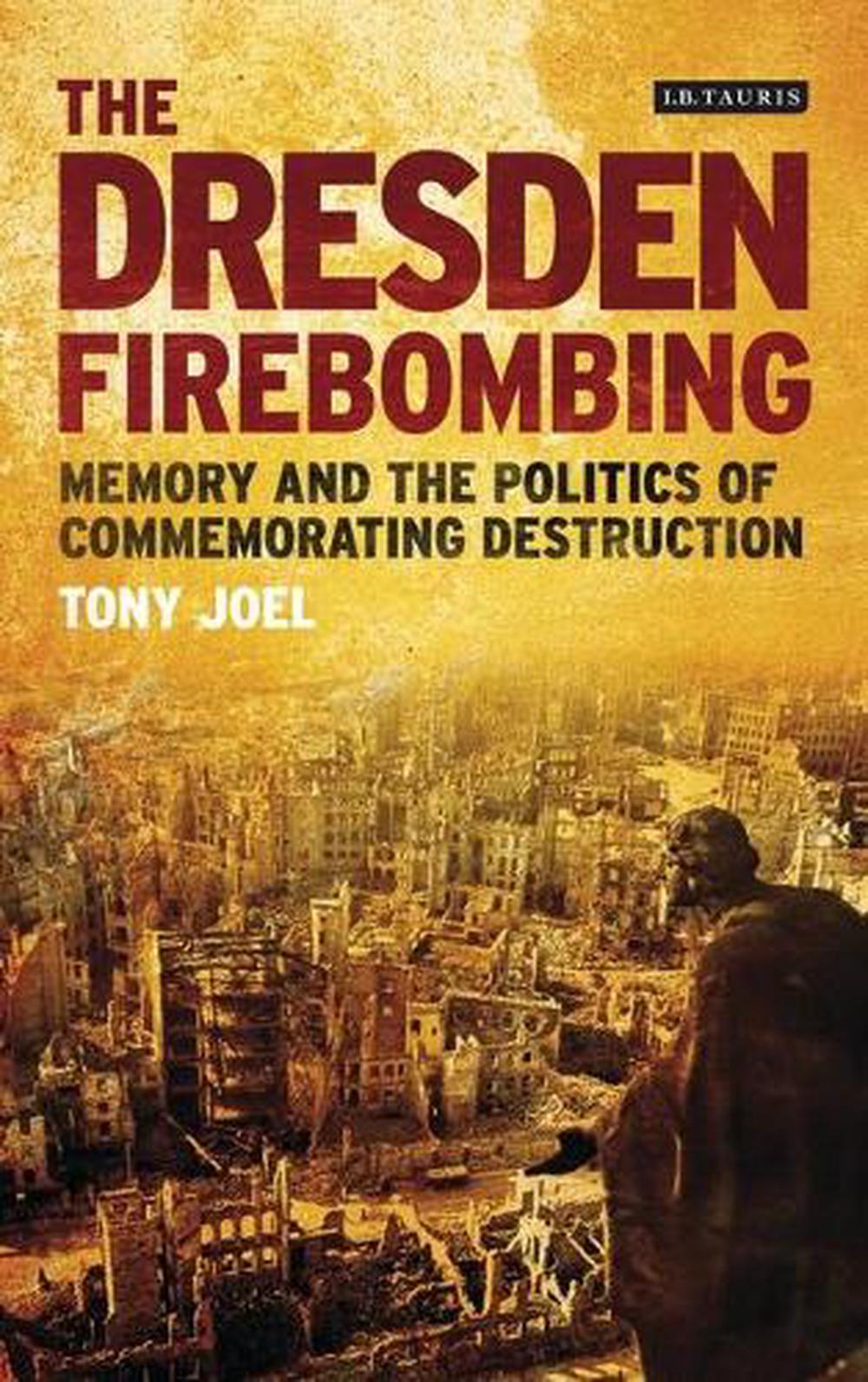
The Dresden Firebombing
by Tony Joel
The firebombing of Dresden marks the terrible apex of the European bombing war. In just over two days in February 1945, over 1,300 heavy bombers from the RAF and the USAAF dropped nearly 4,000 tonnes of explosives on Dresden's civilian centre. Since the end of World War II, both the death toll and the motivation for the attack have become fierce historical battlegrounds, as German feelings of victimhood compete with those of guilt and of loss. The Dresden bombing was used by East Germany as a propaganda tool, and has been re-appropriated by the neo-Nazi far right. Meanwhile the rebuilding of the Frauenkirche - the city's sumptuous 18th century church destroyed in the raid - became central to German identity, while in London, a statue of the Commander-in-Chief of RAF Bomber Command, Sir Arthur Harris, has attracted protests. In this book, Tony Joel focuses on the historical battle to re-appropriate Dresden, and on how World War II continues to shape British and German identity some seventy years later.
Hardcover
English
Brand New
Publisher Description
The firebombing of Dresden marks the terrible apex of the European bombing war. In just over two days in February 1945, over 1,300 heavy bombers from the RAF and the USAAF dropped nearly 4,000 tonnes of explosives on Dresden's civilian centre.Since the end of World War II, both the death toll and the motivation for the attack have become fierce historical battlegrounds, as German feelings of victimhood complete with those of guilt and loss. The Dresden bombing was used by East Germany as a propaganda tool, and has been re-appropriated by the neo-Nazi far right. Meanwhile the rebuilding of the Frauenkirche- the city's sumptuous eighteenth-century church destroyed in the raid-became central to German identity, while in London, a statue of the Commander-in-Chief of RAF Bomber Command, Sir Arthur Harris, has attracted protests. In this book, Tony Joel focuses on the historical battle to re-appropriate Dresden, and on how World War II continues to shape British and German identity today.
Author Biography
Tony Joel is Lecturer in Modern History at Deakin University, Australia and a member of the Alfred Deakin Research Institute.
Table of Contents
INTRODUCTION The Destruction of Dresden and the Shifting Dynamics of German Victimisation Discourse Dresden as paradigm of German victimisation and sacrifice Writing about the Dresden bombing and its aftermath Conceptual framework and key terms A mythical taboo Victimisation discourse in divided Germany Bombing and victimisation discourse in reunified Germany Application of concepts CHAPTER 1 The Western Allies' Strategic Bombing Offensive and Dresden's Transformation from European Kulturstadt to Germany's Opferstadt Build-up Watershed Escalation Why is Dresden special? Or, why Dresden is special Wartime reactions Issues of interpretation: shaping and reflecting controversy Conclusion CHAPTER 2 The Fashioning of Dresden's Destruction into a Political Asset: 1946 to the Early 1980s The Nuremberg interregnum The 1950s The 1960s The 1970s and early 1980s CHAPTER 3 Dresden's Last Milestone Gedenktag before the Fall of the Wall: 13 February 1985 West German mass-mediation of Dresden as Opferstadt The party's Gro?kundgebung The reopening of the Semperoper The Frauenkirche ruins Conclusion CHAPTER 4 Dresden Memory Politics in the Schwebezeit: 1989-90 Kohl, the ruins, and "die Einheit der Nation" Church over ruins? Dresden's stateless Gedenktag: 13 February 1990 Conclusion CHAPTER 5 A British Dimension to Dresden Commemorative Politics: 1992-2000 Homage to a hangman, or misunderstood memorialisation? Dresden: the awkward but obligatory interlude Britain responds to the Ruf: the Dresden Trust The 1995 Gedenktag and a signal of intent The 2000 Gedenktag and making good on a promise Conclusion CHAPTER 6 Dresden as a Memory Battleground: 13 February 2005 The Queen and Dresden: revisiting a theme, but not the city Depicting Dresden as the "Bomben-Holocaust" Renewed focus on longstanding controversies Reconciliation remains a central plank Making a statement in absentia Mixed messages and the struggle over commemoration Conclusion CONCLUSION Memory Work-in-Progress: Remembering the Past, Reflecting on the Present and Future NOTES BIBLIOGRAPHY
Review
Tony Joel's in-depth study does much to explain why the fire-bombing of Dresden has come to hold such iconic status. An original interpretation of changing and conflicting memory cultures, this work is also highly readable.!AZ Professor Mary Fulbrook, FBA, Professor of German History and Vice-Dean (Interdisciplinarity), University College London !(R)The literature on the politics of memory in Germany is immense, but only recent research has dedicated itself to the processes after the fall of the wall and German unification in 1990. Tony Joel!AZs study is one of the first to combine a broader view of German identity and memory through the prism of the Dresden Bombing. The author can be congratulated for this achievement. This is a highly informative, well written and perceptive work.!AZ Jost D' lffer, Professor of Modern History, University of Koln
Details

